Aims of the activity and description of target group
This activity guides participants through the process of developing their project idea into a clear goal, e.g. a research question or a mission statement. Participants who already have a clear goal in mind can skip this activity. The activity is suitable for researchers and citizens in a group or individual learning setting. Session #1 and #2 should be carried out beforehand.
Resources, Materials needed
Paper, pen, color pencils
Duration
60 minutes
Step 1 - Make your topic the center (5 minutes)
Start by drawing a central element in which you write the topic of your project. Draw a horizontal line that divides the paper into two halves. Write "Science" in the top half and "Society" in the bottom half.
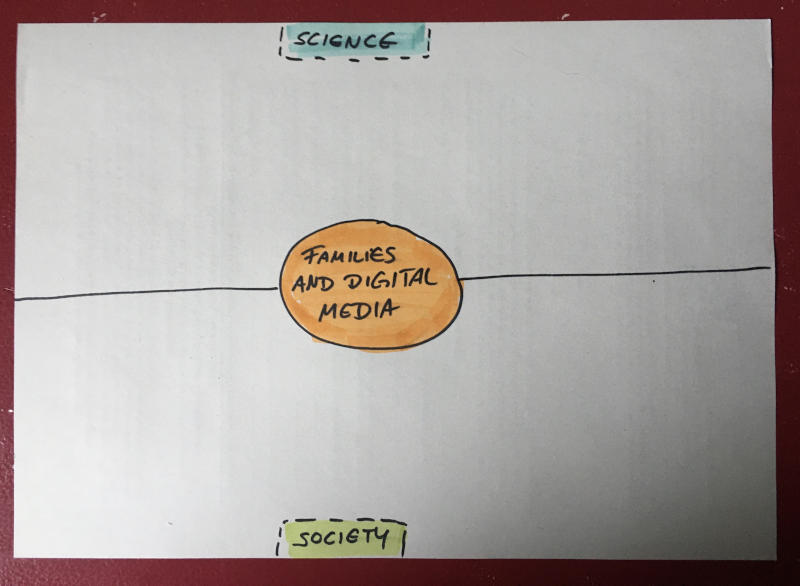
Consider whether it makes sense to divide the two areas into further segments. This makes sense if there are groups within science or society that have different questions, issues or requirements.
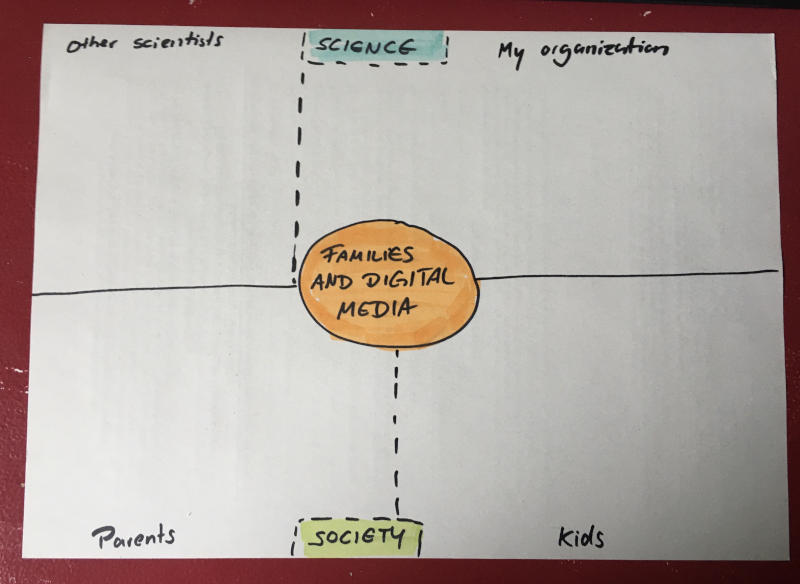
Step 2 – Add questions (15 minutes)
Add questions to each section that the groups might have about the project idea. Use the material from the previous activities for this, as we have already worked in Part 1 and Part 2 on these questions.
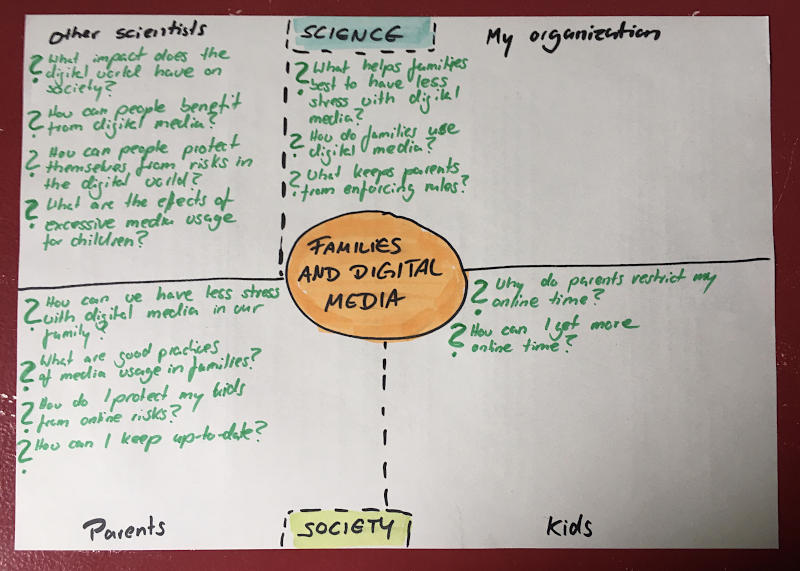
Step 3 – Add missions and wishes (15 minutes)
For each segment, write down what missions and wishes the group could have in relation to your research topic:
- What are their tasks?
- What are their wishes?
- What do they feel they need to do?
You can also find ideas in the results of Part 1 and Part 2 where we have already gathered material on this topic.
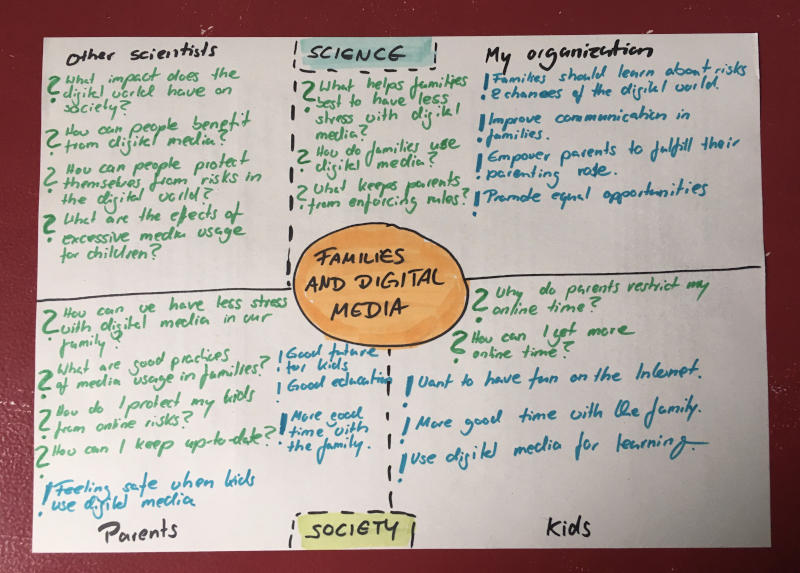
Step 4 - Highlight the most relevant items (10 minutes)
Highlight the most important points by asking yourself the following questions:
- Which points appear in more than one section?
- Which points have a high benefit for everyone involved?
- Which points could motivate people to participate in the project?
- Which points are easy to understand in a Citizen Science environment?
- Which topics are relevant to your organization, e.g. because they complement existing research or funding, or because they align with your organization's goals?
- Which topics have not yet been researched by anyone?
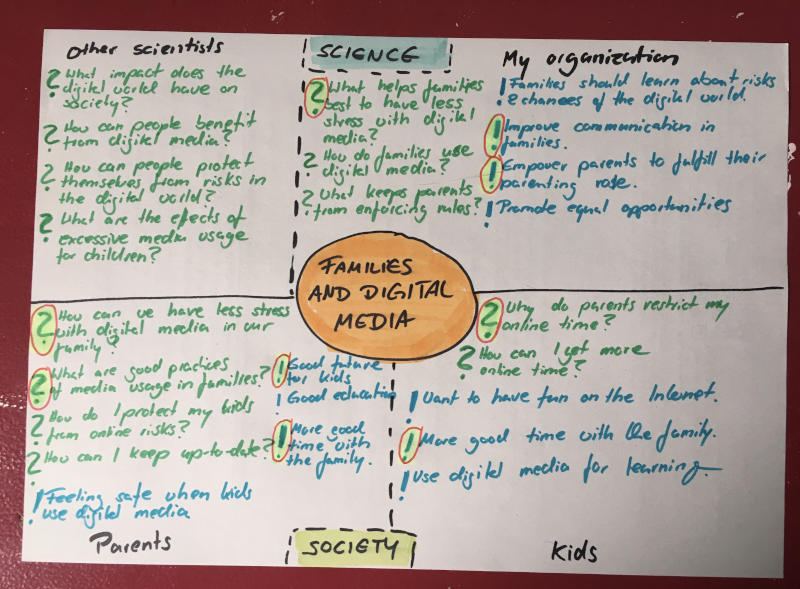
Step 5 – Formulate your research question or mission (15 minutes)
Take a sheet of paper and draw a sign on it. Think of a commercial sign that you put up outside in the city to advertise your project.

Now write your mission, your key question and perhaps a few aspects of how you want to achieve this goal as easily as possible on the sign. Try to avoid technical terms and complicated words.
If you find it difficult to write this down, sit down with your colleagues or other team members and think about this task together. This is a very important point for your project, so take the time you need to do this task properly.
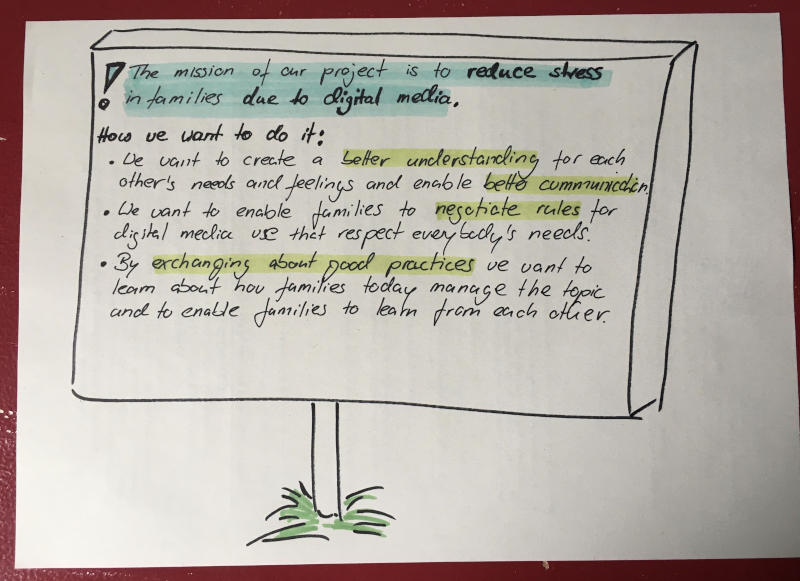
Learning Outcomes - which skills are addressed?
The participants have compiled the findings from all previous activities and written down the essence of their actual research question or assignment.
How do you check the outcomes are reached?
The participants have a checklist for the target group and the location, including the needs and hurdles, and an assessment of whether both are suitable for the project.
De-Briefing questions
- Do you think that your project can be easily understood by outsiders?
- Do you have the impression that you have selected the most important points?
Further links and readings
- Bouchrika, Imed (2024): What Is a Research Question? Tips on How to Find Interesting Topics in 2024. https://research.com/research/what-is-a-research-question (last viewed 02/06/2024)
- Ratan, S. et al. (2019): Formulation of Research Question – Stepwise Approach. https://www.ncbi.nlm.nih.gov/pmc/articles/PMC6322175/ (last viewed 02/06/2024)
- Yonis, Amina (2022): How to Choose a Dissertation Topic | The Research Process Beginners Guide. https://yewtu.be/watch?v=pUPR8maqk1Q&listen=false (last viewed 02/06/2024)
